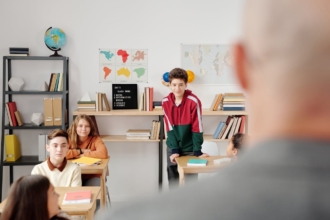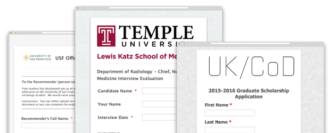Special education students can benefit greatly from an individualized education program (IEP), but only if the corresponding IEP meetings are productive. Whether you’re an educator preparing for your first IEP meeting or you’re just looking for ways to improve, we’ve got you covered with several tips below.
Pro Tip
Need a few extra resources to get your IEP meeting started off right? Check out this student evaluation form and these other education form templates.
5 best practices for IEP meetings
Review all materials thoroughly beforehand
Create a warm, welcoming atmosphere
Minimize surprises
Remember to listen
Help the parent help the child
As with any meeting, you need to go in prepared. Make sure you’ve received and reviewed all evaluations of the student before conducting the meeting. “You should also feel comfortable in understanding what you’ve reviewed,” says Leslie Blevins, a licensed psychologist at Enilda Clinic. Blevins is a former teacher and former school psychologist, and has conducted or been a part of IEP meetings for more than 13 years.
Blevins says that reviewing all evaluations together can help uncover patterns or themes in the child’s life. “This is key for recommending appropriate interventions and accommodations because school districts and states often require numerical data to warrant certain services.”
Before the meeting, it’s also helpful to familiarize yourself with the structure and contents of a standard IEP Form. This document outlines the student’s learning needs, goals, and the services the school will provide, so having a clear understanding of its components will enable you to participate more confidently and contribute more effectively during the discussion.
The focus of an IEP meeting is the child, and many parents may be confused or on edge about how the school is addressing their child’s needs. Mary Rose Scalo, the principal of Sage Day Schools, admits that IEP meetings can be “intimidating” for all involved, especially parents.
To combat the tension, make the atmosphere as warm and inviting as possible. “You want to promote the feeling of teamwork and collaboration. You, school leadership, and the parents are in this together — all working to give the child the best path forward in their educational experience,” Scalo says.
Scalo also notes the importance of keeping any surprises to a minimum — whether it’s about the child’s academic performance, behavioral issues, or otherwise. For example, you can send parents a copy of the child’s current academic progress and functional performance. “A lot of parents appreciate receiving this information prior to the meeting,” she says.
However, if you’re dealing with parents who are particularly anxious, distrustful, or dissatisfied with past IEP experiences, you may need to take additional steps. Scalo recommends contacting the parent: “Consider reaching out with a phone call beforehand or collaborating with the case manager to make sure they reach out to the parents and share essential information — good or bad.”
Scalo says that an IEP document can be lengthy, up to 30 pages or more. “That’s a lot of educational jargon to wade through.” Don’t make the mistake of getting too caught up in walking through the document that you forget to allow ample time to hear parent and/or student input and concerns. “The student is at the heart of the IEP meeting. Make sure it feels that way,” she says.
As a teacher, you often want the same things for a child that their parents want. However, you’re just as often strapped for time, resources, and training to make those things a reality. Plus, you have a number of other students to think about. But your school may have access to accommodations that could help a student understand the curriculum, such as audio recordings of lessons or a designated reader who reads test questions aloud to kids. Sometimes parents aren’t aware of these resources.
Let parents know there are resources available to help their child; just caution them to be mindful of what they ask for. As Blevins warns, “Be careful about asking for a full plate of accommodations and modifications just because they’re available. This can limit the child’s ability to extend themselves and practice independence or learn adaptive skills.”
RECOMMENDED ARTICLES









































































































Send Comment: